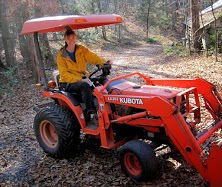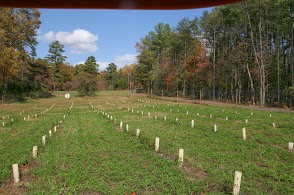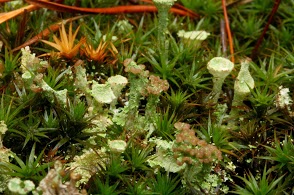Basic Profile
Name: Penny Firth
Education: Ph.D. Virginia Tech, 1983 (Biology)
NSF Experience/History:
My background is in stream ecology and I pursue scholarly interests in biodiversity, climate change, ecosystem services, coupled natural and human systems, and transformative novelty.
I came to Washington in 1988 to support NASA’s program on bioregenerative life support systems for the Mars mission. As you have probably noticed, we do not have a Mars mission that involves human space travel. That was one of the factors that led to my decision to join NSF in 1991.
Shortly after I arrived (and well before I was a seasoned Program Officer!), I was sent to the Director’s office, where I coordinated interagency activities, helped develop a Federal environmental technology strategy, and served as architect of the NSF/EPA Partnership for Environmental Research.
I led planning efforts for the Freshwater Imperative research agenda and initiated and managed the NSF/EPA Water and Watersheds competition. Then I was tapped to serve as the executive secretary of the National Science Board (NSB) Task Force on the Environment, chaired by the incomparable Dr. Jane Lubchenco. Our report Environmental Science and Engineering for the 21st Century, The Role of the National Science Foundation has had a big influence on NSF, and even now it remains a touchstone for us.
I’ve held several positions in DEB, including Program Director (Ecosystems), Deputy Division Director, and now Division Director. I enjoy strategic planning quite a bit and have been described as entrepreneurial and opportunistic. During my years here I’ve tried very hard to be a rainmaker for the community — listening for trends, moving toward prospects, and helping catalyze new interdisciplinary intersections and partnerships.
For example, as Water and Watersheds was winding down in 2000, I supported the Nature and Society workshop (report here) and led the creation of a follow-on program: Dynamics of Coupled Natural and Human Systems with my colleague and friend Tom Baerwald. During 2007-2009 I led strategic planning for an effort to revolutionize undergraduate biology education with a vision of broad career horizons, experiential learning, and concept literacy, with my NSF/EHR colleague Linda Slakey. A major conference on this topic resulted in the report, Vision and Change in Undergraduate Biology Education: A Call to Action. It’s been gratifying to watch the community-building activities that resulted from this work.
Recently, I led the NSF Dimensions of Biodiversity team that developed the vision and strategic plan for a 10-year campaign to characterize the integrated phylogenetic, genetic and functional dimensions of biodiversity on Earth. The program now has partnerships with China and Brazil, and we are working to partner elsewhere.
Q&A
What do you do in your position at NSF?
I do my best to listen to and enable the community. For me, this means recruiting and retaining a world-class staff and giving them the responsibility and the authority to go after blue-sky science with gold-standard peer review. We try to grow (or at least protect) our budgets, and we pay close attention to both process and products. NSF’s investments truly benefit the nation, and I’m really proud of the team of rotators and permanent staff here in DEB that helps with that.
One thing you wished more people understood about your field and why:
I wish that more of the general public understood that science is an evidence-based process, not a static set of facts or beliefs.
One thing you wished more people understood about DEB and why:
Can I have two things?
I wish more people understood that supporting fundamental, curiosity-driven research is like a blue-chip investment in the future. What will we learn by determining the genealogy of all life – ever – on Earth? How will our long-term research programs alter the landscape of future science questions, and of natural resource decision making? What surprises – and essential understandings – will rise from support for research in evolutionary processes, community ecology, systematics and ecosystem science?
I also wish it was common knowledge that research findings supported by the Environmental Biology division have immediate and significant relevance to the most profound environmental issues of our generation. These include (but are not limited to!) climate change drivers and feedbacks that involve biota, rapid contemporary evolution, and chronic and episodic impoverishment of the biosphere.
What would someone find you doing in your down time?
- Working in the orchard devoted to breeding blight-resistant American chestnut trees that we have established on our family property in Culpeper, VA. We provide the land and workers, and the American Chestnut Foundation provides the know-how and seeds.
- Photographing fungi and posting the images on MushroomObserver.org for identification by experts.
- Writing and performing songs for departing DEB staff.
- Spending quiet, happy times with my husband, two children, and buzz-cut standard poodle.
What was the last book you read?
The Goldfinch, by Donna Tartt. I would like to share the sublime last sentence with you:
“And I add my own love to the history of people who have loved beautiful things, and looked out for them, and pulled them from the fire, and sought them when they were lost, and tried to preserve them and save them while passing them along literally from hand to hand, singing out brilliantly from the wreck of time to the next generation of lovers, and the next.”
Describe a job you had prior to working at NSF:
I worked in a dog kennel for three years starting at age 12. I became very skilled at cleaning up dog poop. Although I do not include this job on my résumé, the skill has been useful on occasion.
I also worked in a South Carolina swamp for several years after grad school, encountering irritable alligators, venomous reptiles and stinging insects. I found this experience to be good preparation for the next stage of my career, in Washington, DC.
Who do you admire, and why?
Dr. Joe Bordogna, former NSF Deputy Director, who in his 2005 Farewell Remarks said, “NSF is in the business of disruption, the “free play of free intellects” as Vannevar Bush put it. It is the nation’s agent of intellectual surveillance at the frontiers of nature and human creativity… As an entity without boundaries, its shape is determined by its owners, the community writ large. Its stewards do best when they nurture it with good listening, awe-inspired attention, and a judgment here and there.”





Pingback: Help Us Recruit for a Leadership Opportunity in DEB (Open Now)! | DEBrief